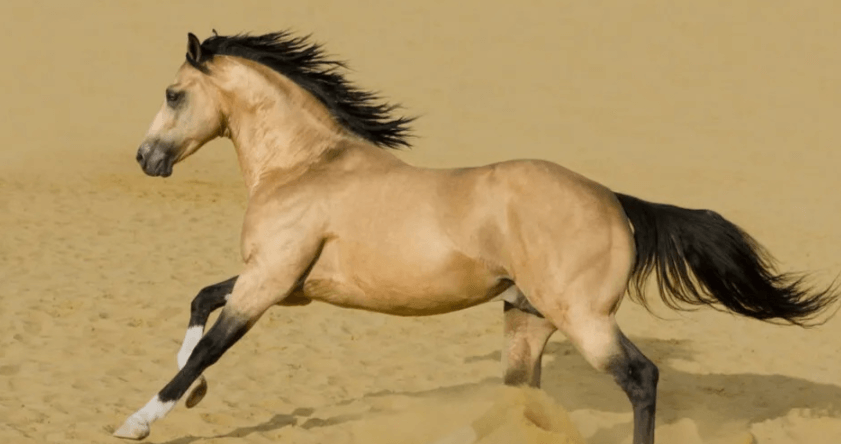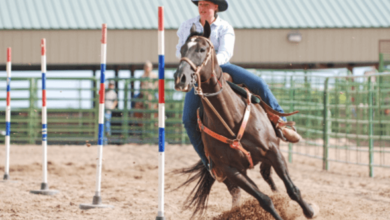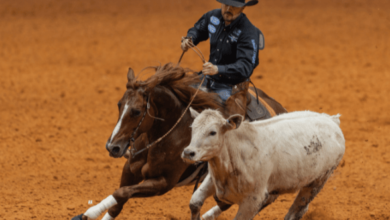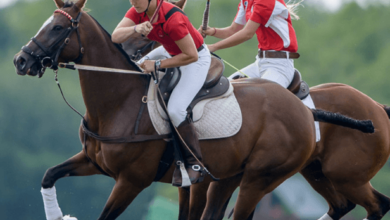Pole bending is a thrilling rodeo sport that requires speed, agility, and precision. Horses competing in this event must navigate through a series of poles in a serpentine pattern, making tight turns and accelerating quickly. Selecting the ideal breed for pole bending is crucial, as some breeds possess natural attributes that align perfectly with the sport’s demands. In this article, we will explore various horse breeds, their characteristics, and why they may be suited for pole bending.
Understanding Pole Bending and Its Requirements
Before diving into specific breeds, it is essential to understand what makes a great pole bending horse. Pole bending involves a course of six poles spaced 21 feet apart. The horse and rider must weave through the poles, making sharp turns and accelerating through straight sections. Therefore, the ideal pole bending horse must have a combination of speed, agility, quick reflexes, and a willing temperament.
Key attributes for a pole bending horse include:
- Quick acceleration and speed: Ability to sprint through straight sections of the course.
- Agility: The capacity to make quick, tight turns without losing balance.
- Responsiveness: A horse that listens well to commands, enabling the rider to guide it through the course with precision.
- Stamina: The endurance to maintain speed and performance through multiple rounds of competition.
Quarter Horse: The Top Contender for Pole Bending
The American Quarter Horse is widely regarded as the best breed for pole bending, and for good reason. Known for its speed over short distances and exceptional agility, this breed has all the qualities needed for success in the sport. The Quarter Horse’s muscular build and powerful hindquarters enable it to accelerate quickly, making it ideal for the sprinting segments of the pole bending course.
Additionally, the Quarter Horse is known for its “cow sense,” or natural ability to understand and anticipate the movements required in Western riding events. This quality makes it easier for riders to train and direct them through the poles, improving overall performance. Quarter Horses also tend to be calm and cooperative, which helps them remain focused during the high-paced environment of rodeo competitions.
Paint Horse: A Close Competitor
Another popular breed for pole bending is the American Paint Horse. With a similar build to the Quarter Horse, the Paint Horse is known for its strength, speed, and agility. Paint Horses have a strong, compact body that allows for quick movements, making them adept at the tight turns required in pole bending.
Their athletic nature and quick reflexes allow them to excel in rodeo events, and their distinctive coat patterns make them a favorite among riders looking for a horse with both beauty and skill. Paint Horses also share the same willing temperament as Quarter Horses, which means they are relatively easy to train for pole bending and can develop a strong bond with their rider.
Appaloosa: Speed and Endurance Combined
The Appaloosa is another breed that shines in pole bending. Originally bred by the Nez Perce Native American tribe, Appaloosas are known for their endurance, agility, and distinctive spotted coat patterns. While they may not have the explosive sprinting power of a Quarter Horse, Appaloosas are well-suited for events that require a combination of speed and stamina.
Appaloosas are highly trainable and have a strong work ethic, making them a good choice for riders who are looking for a horse with a bit more versatility. Their endurance is particularly beneficial in competitions that involve multiple heats or rounds, as they can maintain their performance without tiring easily.
Thoroughbred: Speed with a Versatile Nature
Though Thoroughbreds are primarily known for racing over longer distances, they can be surprisingly effective in pole bending. Their natural speed and athleticism can give them an edge in the straight-line portions of the course, allowing them to clock impressive times.
However, Thoroughbreds may require more training than Quarter Horses or Paint Horses to master the tight turns required in pole bending. Their larger frame can make it more challenging for them to navigate the course as quickly, but with proper conditioning and training, they can become competitive in the sport. For riders who appreciate the Thoroughbred’s elegance and versatility, this breed can be a rewarding choice.
Arabian Horse: Agility and Intelligence
The Arabian horse is another breed to consider for pole bending, especially for riders who value a blend of agility and intelligence. Known for their spirited nature and high energy levels, Arabians have a compact build that allows them to perform tight turns with ease. Their smaller stature and refined build give them an edge in agility-based events like pole bending.
Arabians are also known for their intelligence, making them quick learners. This attribute can be particularly useful in training for complex maneuvers, such as weaving through poles. However, their spirited temperament may require a more experienced rider who can channel their energy into the discipline of pole bending.
Mustang: The Wild Card with Versatility
The Mustang is often seen as a wild card in the pole bending world, but this breed’s versatility and adaptability make it a viable contender. Mustangs are known for their strength, resilience, and sure-footedness, traits that stem from their history as wild horses of the American West.
Although they may require more time to train compared to some of the other breeds, Mustangs can develop a strong bond with their rider and become highly responsive. Their ability to quickly change direction and navigate uneven terrain translates well into the demands of pole bending. For riders looking for a unique partner with a strong spirit, the Mustang is a worthy consideration.
Comparing Different Breeds: What Sets Them Apart?
While several breeds can be trained for pole bending, their differences lie in their natural attributes and how well they adapt to the sport’s specific requirements. Here’s a quick comparison:
- Quarter Horse: Best overall due to speed and agility.
- Paint Horse: Similar to Quarter Horses but with unique coat patterns.
- Appaloosa: Offers more endurance, making them good for longer competitions.
- Thoroughbred: Excellent straight-line speed but needs training for turns.
- Arabian: Agile and intelligent, ideal for riders looking for a smaller horse.
- Mustang: Versatile and tough, requires patience in training.
Training Tips for Pole Bending Horses
Regardless of breed, proper training is essential for success in pole bending. Here are a few tips for training a horse for pole bending:
- Start with ground work: Make sure your horse is comfortable with basic commands and maneuvers before introducing them to the poles.
- Work on flexibility: Incorporate exercises that improve your horse’s ability to bend and turn, such as serpentines and circles.
- Practice slow before fast: Begin by walking or trotting through the poles before attempting to run the course at speed.
- Focus on precision: Accuracy is just as important as speed in pole bending. Make sure your horse understands the pattern before pushing for faster times.
- Conditioning is key: Ensure your horse is physically fit, with a focus on building muscles in the hindquarters for quick acceleration.
FAQs: What Is the Ideal Breed of Horse for Pole Bending?
Q1: Can any breed of horse be trained for pole bending?
Yes, most horses can be trained for pole bending with patience and practice, though some breeds are naturally more suited to the sport due to their physical attributes.
Q2: Why is the Quarter Horse preferred for pole bending?
Quarter Horses are preferred because of their combination of speed, agility, and a calm temperament, which makes them highly effective at weaving through poles.
Q3: Are Thoroughbreds good for pole bending?
Thoroughbreds can perform well in pole bending, especially in the straight sections of the course. However, they may require more training to master the tight turns.
Q4: How long does it take to train a horse for pole bending?
Training time can vary depending on the horse’s breed, age, and previous experience, but most horses can learn the basics within a few months of consistent practice.
Q5: Can a Mustang be competitive in pole bending?
Yes, Mustangs can be competitive in pole bending with proper training. Their resilience and quick reflexes can make them excellent for the sport.
Q6: What is the average size of a horse suitable for pole bending?
Horses ranging from 14 to 15.5 hands are generally considered ideal for pole bending, as their smaller size allows for tighter turns and quicker maneuverability.
Conclusion
Selecting the ideal breed of horse for pole bending involves understanding the specific demands of the sport and how well a breed’s natural abilities align with those needs. While the American Quarter Horse remains the top choice due to its speed, agility, and temperament, other breeds like the Paint Horse, Appaloosa, Thoroughbred, Arabian, and Mustang each bring unique strengths to the table. By choosing a breed that fits your riding style and competition goals, and by investing in proper training, you can set yourself and your horse up for success in the exciting world of pole bending.





